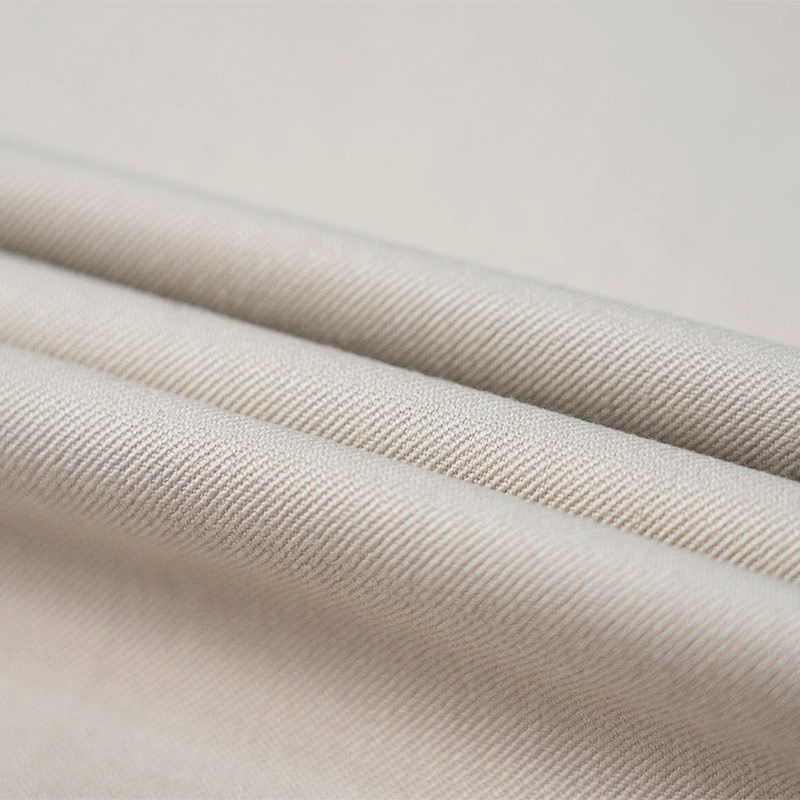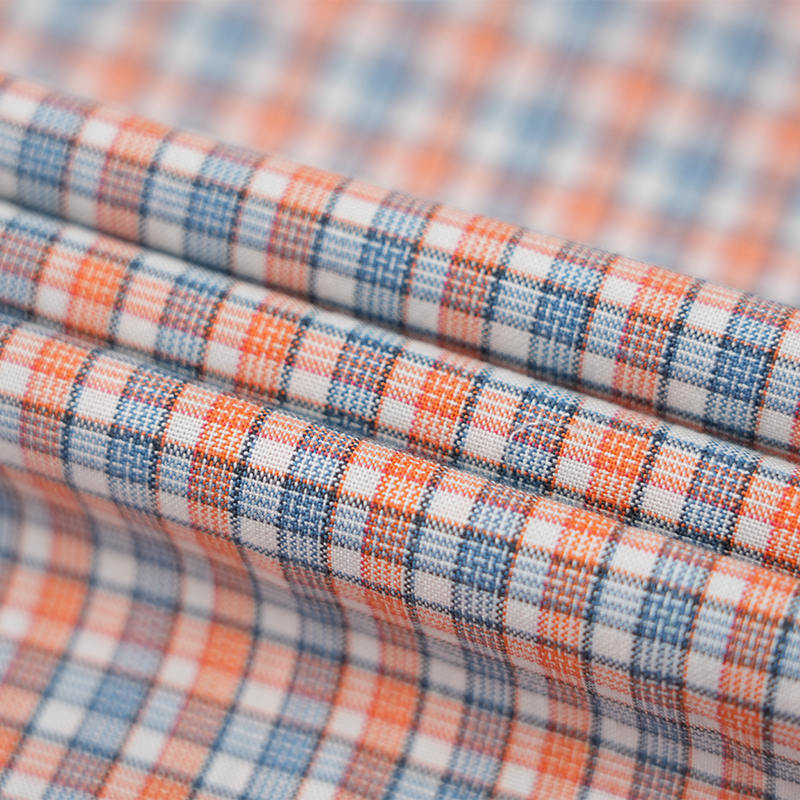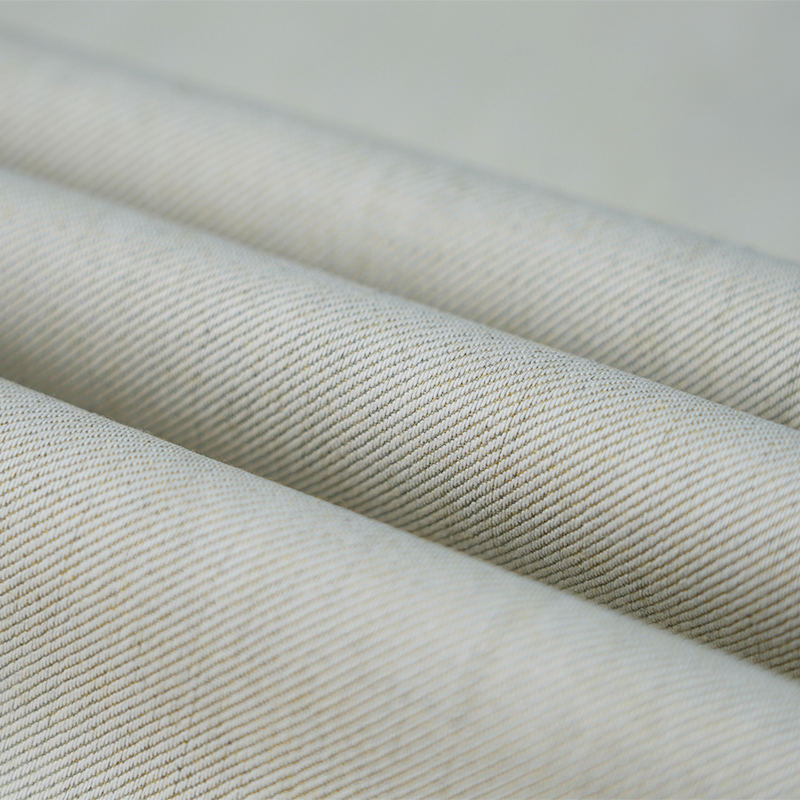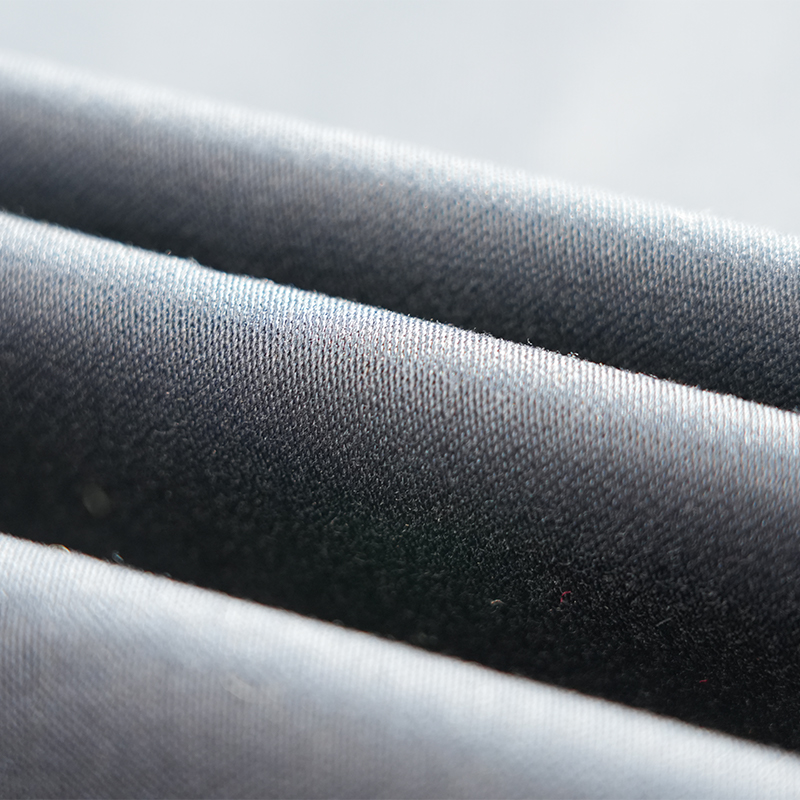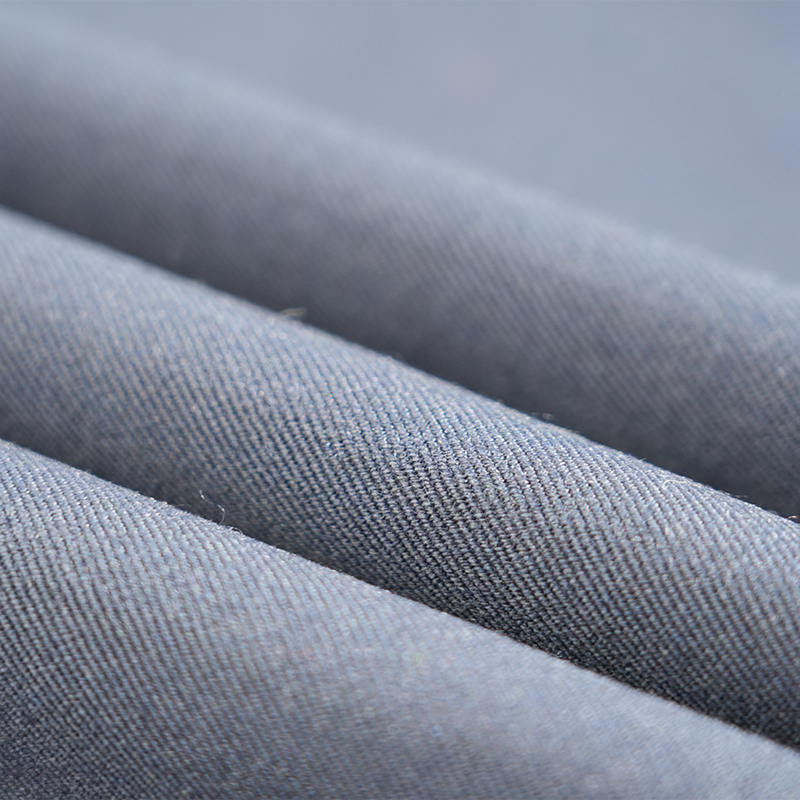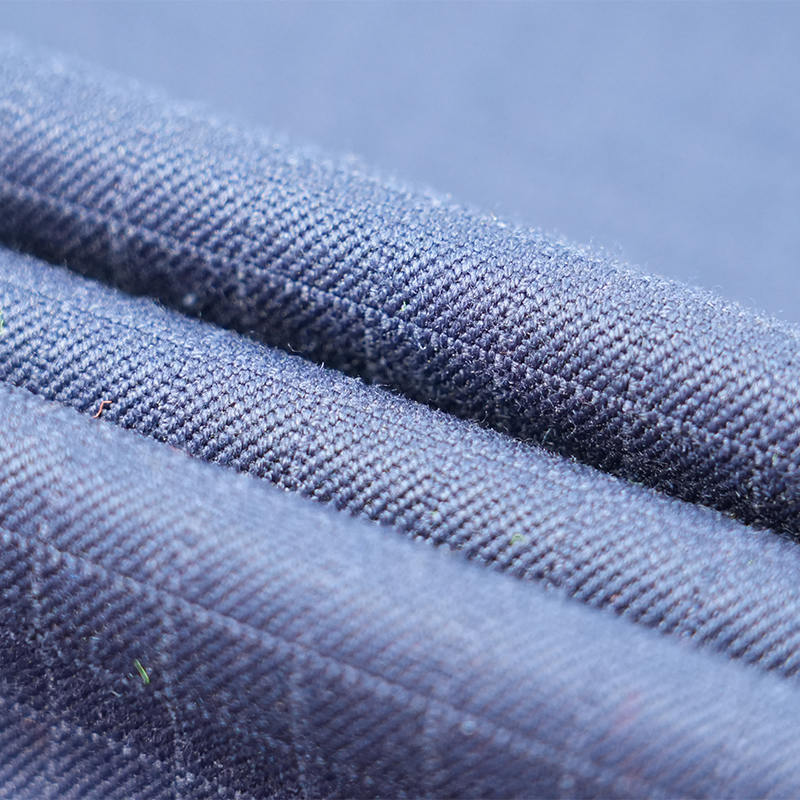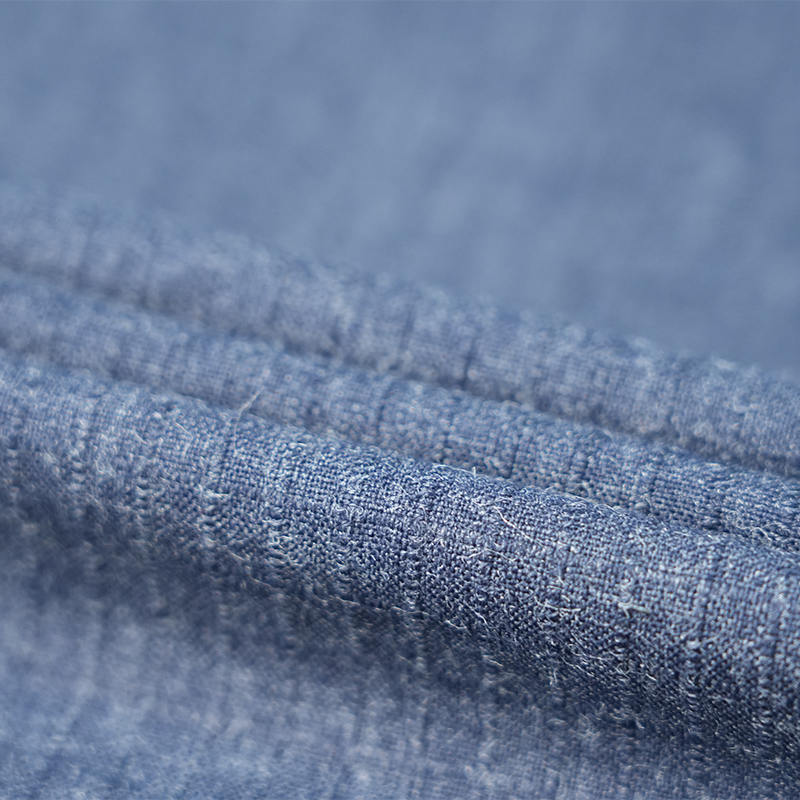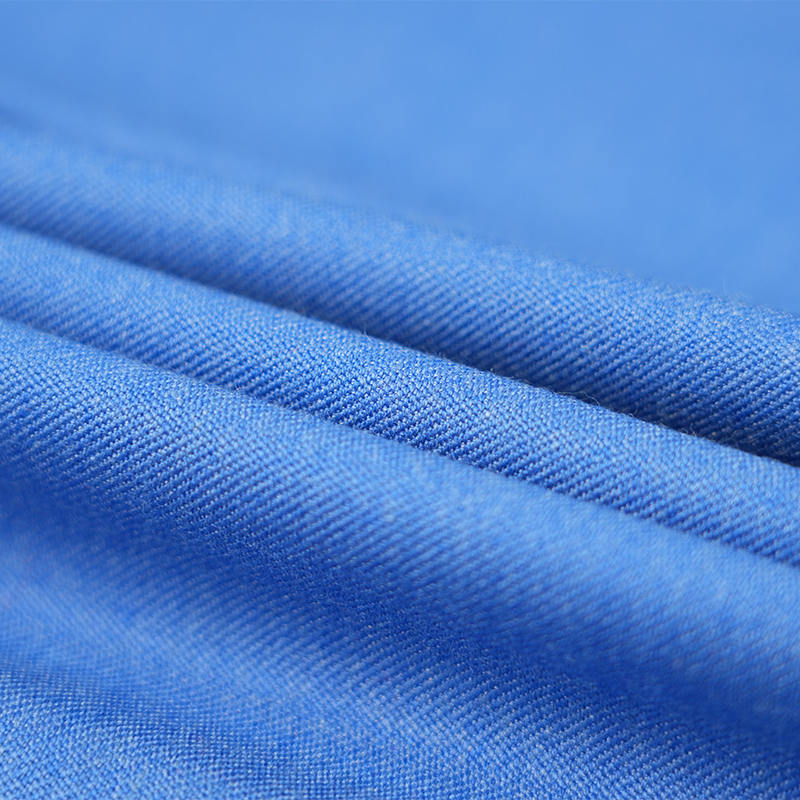Content
- 1 1. What is flame retardant fabric?
- 2 2. Why is flame retardant fabric necessary in the oil and gas industry?
- 3 3. Definition and core role of flame retardant protective fabric
- 4 4. Technical principles and key features of flame retardant fabrics
- 5 5. Specific application of flame-retardant fabrics in the oil and gas industry
- 6 6. How do flame-retardant fabrics reduce 80% of burn accidents in the oil and gas industry?
- 7 7. Procurement pitfall avoidance guide: essential features of flame-retardant clothing that meets standards
1. What is flame retardant fabric?
Flame retardant fabric is a functional textile that has been specially treated or made of intrinsic flame retardant fibers. It can inhibit the spread of combustion when exposed to flames or high temperatures, or quickly extinguish itself after the fire source is removed, thereby providing thermal protection and safety for the wearer. Unlike ordinary fabrics, flame retardant fabrics are not "completely non-flammable", but scientifically change the combustion characteristics of the material to significantly reduce the risk of injury in a fire.
Core characteristics of flame retardant fabrics
Flame retardancy
Measured by the "Limiting Oxygen Index (LOI)", it indicates the minimum oxygen concentration required for the material to burn. For example:
Ordinary cotton cloth LOI≈18% (the oxygen in the air is about 21%, so it is easy to burn)
The LOI of flame retardant fabrics must be ≥28% (such as Nomex® aramid LOI is 30%, which is difficult to continue to burn in the air).
Thermal protection (TPP)
Measures the ability of a fabric to block heat transfer, in cal/cm². The oil and gas industry requires TPP ≥ 20cal/cm², and high-quality flame-retardant clothing (such as Nomex® IIIA) can reach more than 40cal/cm², which can provide more than 10 seconds of escape time in an 800°C flame.
Anti-melting droplet property
It will not melt and drip at high temperatures (to prevent synthetic fiber droplets from adhering to the skin and causing secondary damage).
Durability
The performance of intrinsic flame-retardant fibers (such as aramid) is permanent; after-finishing flame-retardant fabrics (such as flame-retardant cotton) must withstand more than 50 industrial washes.
Flame retardant principles and technical classification
|
Type |
Technical principle |
Representative material |
Advantages and disadvantages |
|
Intrinsic flame retardant fiber |
The fiber molecular structure contains heat-resistant groups such as aromatic rings and amide bonds, and a carbonized layer is formed at high temperature to isolate oxygen and heat. |
Nomex® aramid, Kevlar®, pre-oxidized yarn |
Stable performance and washability, but high cost (such as the unit price of Nomex® clothing is 2-3 times that of flame-retardant cotton). |
|
Finishing flame-retardant fabric |
Flame retardants are added to the surface of ordinary fabrics (cotton, polyester) through chemical padding, coating and other processes. |
Proban® treated cotton, Pyrovatex® flame retardant cloth |
Low cost, good breathability, but poor durability (performance decay after washing), not suitable for high-risk oil working environments. |
Flame-retardant fabric is a technical textile with special protective functions. It can significantly reduce the flammability of materials in flames, effectively slow down the burning speed, and quickly self-extinguish after the fire source is removed. This material changes the combustion characteristics of ordinary textiles through physical or chemical means, providing vital thermal protection for the wearer. It is an indispensable safety equipment for high-risk industries such as petroleum, chemical, and electricity.
From the technical principle point of view, flame-retardant fabrics mainly work through three mechanisms: first, the thermal insulation barrier effect. When exposed to high temperature, a dense carbonized layer will quickly form on the surface of the fabric. The thermal conductivity of this layer of carbide is extremely low, which can effectively block the transfer of heat to the human body. The second is endothermic reaction. The special components in flame-retardant materials will undergo endothermic decomposition at high temperatures, consuming a lot of heat energy. Finally, gas phase flame retardancy. Some flame retardants will release non-flammable gases when heated, dilute the oxygen concentration, and inhibit the combustion chain reaction.
Flame-retardant fabrics can be divided into two major technical types: one is intrinsic flame-retardant fibers, such as aramid (Nomex®), polyimide (PBI), etc. These materials themselves have excellent flame retardancy and long-lasting and stable performance; the other is post-finishing flame-retardant fabrics, which fix flame retardants on the surface of ordinary fibers through processes such as padding and coating. The cost is low but the durability is relatively poor. Test data shows that the limiting oxygen index (LOI) of high-quality flame-retardant fabrics can reach more than 28%, which means that it is difficult to continue to burn in normal air, and the thermal protection performance (TPP) generally exceeds 20cal/cm², which can buy 10-15 seconds of critical escape time for the wearer.
In the oil and gas industry, flame-retardant fabrics show irreplaceable protective value. The common flash fire temperature in the working environment can reach 800-1200℃, and ordinary work clothes will burn completely within 2-3 seconds, while qualified flame-retardant clothing can maintain structural integrity and reduce the risk of burns by more than 70%. International standards such as NFPA 2112 and GB 8965.1-2020 clearly require that flame-retardant protective equipment must be equipped for related operations. Modern flame-retardant fabrics also have composite functions such as anti-static and anti-chemical corrosion. They are 30% lighter than traditional products and 50% more breathable, significantly improving wearing comfort while ensuring safety.
With technological advances, flame-retardant fabrics are developing in the direction of intelligence and multifunctionality. Innovation has upgraded flame-retardant fabrics from passive protection to active safety systems, continuously building a more reliable lifeline for workers in high-risk industries.
2. Why is flame retardant fabric necessary in the oil and gas industry?
The high-risk characteristics of the oil and gas industry determine the necessity of flame-retardant fabrics
The oil and gas industry is recognized as the world's top high-risk industry. There are multiple fire and explosion risks hidden in its operating environment, which is the fundamental reason why flame-retardant fabrics must be used. In the entire industry chain of oil and gas exploration, mining, transportation, storage and processing, workers are always facing the threat of extreme thermal hazards such as flash fire, jet fire and explosion fire.
Flash fire is the most representative form of fire in the oil industry. When flammable gases (such as methane and propane) leak and mix with air to reach the explosion limit, they will instantly form a flame front with a temperature of up to 800-1200℃ when encountering an ignition source, and spread at a speed of 3-5 meters per second.
Jet fire is common in high-pressure pipeline or equipment rupture scenarios. Since oil and gas are sprayed and burned under high pressure, the flame temperature can reach more than 1500℃, and it has the characteristics of continuity and directionality. Ordinary cotton work clothes will burn completely within 2 seconds of contact with jet fire, while flame-retardant clothing that meets the standards can provide at least 10 seconds of effective protection time.
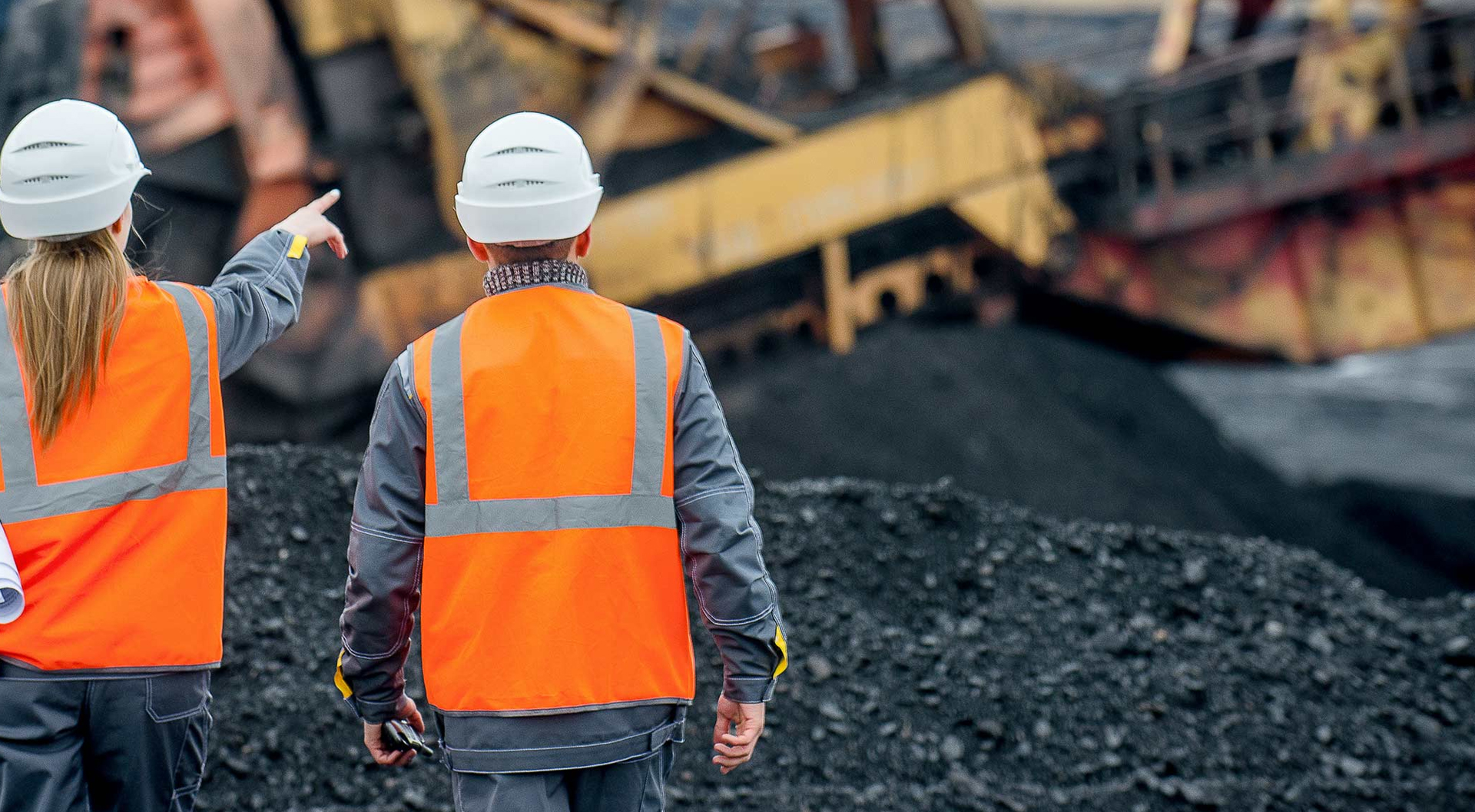
Explosions are often accompanied by shock waves, which, in addition to high temperature hazards, also produce fragment splashes and pressure injuries. The advantages of flame-retardant fabrics are particularly obvious under this complex hazard: aramid-based flame-retardant materials can not only withstand high temperatures, but their high strength characteristics can also resist mechanical damage from splashes to a certain extent.
Flame-retardant fabrics provide critical survival time for oil workers
In fire accidents, time is life. The core value of flame-retardant fabrics is that they can provide wearers with a critical escape time window, which stems from their unique thermal protection mechanism. When exposed to high temperature environments, high-quality flame-retardant fabrics work through a triple protection mechanism:
Carbonization barrier effect: Intrinsic flame-retardant fibers represented by Nomex® will quickly carbonize to form a dense protective layer at high temperatures, and the start time of this process is only 0.5 seconds. The thermal conductivity of the carbonized layer is extremely low (about 0.05W/m·K), which can effectively block the transfer of heat to the skin. Test data show that in an 800°C flash fire, it takes 10-15 seconds for the skin temperature under the flame-retardant clothing to rise to the critical value of second-degree burns (about 55°C), while it only takes 2-3 seconds under ordinary fabrics.
Heat absorption and dispersion: The special fiber structure in flame-retardant fabrics can absorb and redistribute heat energy. For example, pre-oxidized silk fibers undergo endothermic reactions at high temperatures, absorbing more than 300J of heat per gram of material. Composite flame-retardant fabrics also often use a multi-layer design, with materials such as aluminum foil or aerogel added in the middle to reflect thermal radiation. Comparative tests in an oil field show that multi-layer flame-retardant clothing can reduce heat flux by up to 60%.
Anti-melting droplet protection: Work clothes in the oil industry often come into contact with high-temperature equipment, and ordinary synthetic fibers (such as polyester) will melt and drip at more than 200°C, causing severe adhesive burns. The melting point of flame-retardant fibers such as aramid and PBI is above 400°C, and no melting droplets will be produced. The 2019 BP safety report pointed out that after the use of flame-retardant clothing, secondary injury accidents caused by melting droplets were reduced by 92%.
Medical research on human burns shows that the mortality rate increases significantly when the burn area exceeds 50%, and flame-retardant clothing can minimize this risk. For oil workers wearing qualified flame-retardant clothing, the average burn area in a fire is controlled below 15%, and most of them are curable second-degree burns, which significantly improves the survival rate and recovery quality.
The core reason why the oil and gas industry needs flame-retardant fabrics is that the high-risk working environment of the industry has extremely high risks of fire and explosion, and flame-retardant fabrics can provide critical life safety protection for workers.
Industry-specific high-risk environment
Dense concentration of flammable and explosive materials
Substances such as crude oil, natural gas, and liquefied petroleum gas (LPG) have extremely low flash points (such as natural gas -188°C), and can cause explosions when mixed with air and encounter tiny sparks
Toxic gases such as hydrogen sulfide will cause secondary hazards when burned
Ignition sources are everywhere
Sparks from electrical equipment (accounting for 23% of fires in the oil and gas industry)
Metal tool collisions (accounting for 18%)
Static discharge (especially when handling low-conductivity hydrocarbons, the risk is higher)
The following is a table analyzing the reasons why the oil and gas industry needs flame retardant fabrics, comparing and explaining from multiple dimensions:
|
Demand dimensions |
Ordinary work clothes |
Flame-retardant fabrics |
Industry-specific features |
|
Fire risk |
Ignites when exposed to fire, exacerbating the fire |
Carbonizes when exposed to fire to form an insulating layer, not flame-supporting |
There are a large number of Class A/B flammable substances (flash point <28°C) in the oil and gas environment, which can be ignited by a tiny spark |
|
Thermal injury protection |
Melts at high temperatures, causing secondary burns |
Maintains integrity at 800°C (such as Nomex® fiber), TPP value ≥50cal/cm² |
Fluid temperature can reach 300-500°C during blowout, and flame temperature exceeds 1000°C |
|
Static electricity control |
Easy to generate static electricity (friction voltage >5kV) |
Surface resistance <10⁹Ω, static electricity half-life <2s (EN 1149 standard) |
When handling low-conductivity hydrocarbons, static electricity discharge energy >0.2mJ may ignite |
|
Chemical protection |
No special protection |
Oil stain resistance (AATCC 118 standard), acid and alkali resistance (pH 1-13 range) |
Crude oil sulfur compounds (such as H₂S), fracturing fluid acid and alkali corrosion |
|
Arc protection |
Completely unprotected |
40cal/cm² arc protection (ASTM F1506) |
Arc flash explosions are prone to occur in substations and electrical equipment-intensive areas (accounting for 12% of oil and gas plant accidents) |
3. Definition and core role of flame retardant protective fabric
Flame retardant fabric, professionally known as Flame Resistant Fabric (FR fabric), refers to functional special fabrics that can prevent themselves from being ignited when in contact with flames or high-temperature objects, or can significantly delay and eventually stop burning. Flame retardant fabrics are not completely non-flammable, but have the characteristics of being able to quickly extinguish themselves after the fire source is evacuated, and will not continue to burn or cause the flame to spread over a large area. This feature makes flame retardant fabrics an indispensable safety guarantee for the oil and gas industry, and can buy precious escape time and rescue opportunities for on-site workers in the event of a sudden fire.
In the oil and gas operating environment, FR fabric for Oil & Gas Protection mainly undertakes three major protection missions--
Heat protection: directly isolate the damage of flames and high temperatures to the skin, and reduce the risk of burns. When a flash fire accident occurs, flame retardant work clothes can form a protective layer, so that the burning duration of the clothing does not exceed 2 seconds, ensuring that the clothing will not become a secondary fire source.
Anti-drip: Prevent synthetic materials from melting and adhering to the skin at high temperatures to cause more serious damage. Traditional chemical fiber fabrics such as polyester will melt and adhere to the skin at high temperatures, while intrinsic flame-retardant fibers such as aramid can maintain structural stability and avoid secondary damage.
Thermal radiation shielding: Reduce thermal radiation transfer in high-temperature environments and alleviate heat stress reactions. High-temperature equipment surfaces are often found on oil platforms or refineries. Flame-retardant fabrics reflect and scatter thermal radiation through special fiber structures to maintain a tolerable body temperature.
The special operating environment of the oil and gas industry places extremely high demands on flame retardancy. Common fire risks in the industry include: flash fire (a flame front that spreads instantly, with temperatures reaching over 1000°C), jet fire (continuous flame jets caused by high-pressure pipeline ruptures), and fires caused by explosions. In these extreme cases, ordinary work clothes not only fail to provide protection, but may aggravate the damage.
FR fabric for Oil & Gas Protection changes the combustion process through its special physical and chemical structure: on the one hand, it isolates oxygen through the formation of a carbonized layer, and on the other hand, it reduces the surface temperature through endothermic reactions. Tests show that high-quality flame-retardant fabrics can extend the human body's tolerance time in 800°C flames from less than 3 seconds to more than 10 seconds. These critical seconds often determine the difference between life and death. It is this characteristic of "racing against death" that makes flame-retardant fabrics the most core component of personal protective equipment (PPE) in the oil and gas industry.
Flame-retardant fabrics are important protective equipment for high-risk industries such as petroleum, chemical, and electric power, and their performance directly affects the life safety of users. However, many companies tend to only focus on the use of flame-retardant fabrics, but ignore the correct storage methods. Improper storage will lead to decreased flame retardant performance, shortened service life, and even cause safety hazards.
- Storage environment requirements
Temperature and humidity control
Flame-retardant fabrics are very sensitive to the temperature and humidity of the storage environment. The ideal storage environment should meet the following requirements:
Temperature control between 15-30℃
Relative humidity does not exceed 60%
High temperature and high humidity environment will accelerate the hydrolysis of flame retardants and fiber aging. Experiments show that when the ambient humidity exceeds 70%, the efficiency of some flame retardants will drop by 15% within 3 months. It is recommended to install temperature and humidity monitoring equipment in the storage area and use a dehumidifier or desiccant when necessary.
Avoid light and ventilate
Ultraviolet rays will decompose the active ingredients in flame retardants, so when storing, you should:
Avoid direct sunlight
Use light-shielding packaging or dark storage cabinets
Maintain proper ventilation, but avoid strong airflow
- Packaging and stacking specifications
Packaging material selection
Suitable packaging materials can effectively protect flame-retardant fabrics:
It is recommended to use flame-retardant plastic film or aluminum foil composite film
It is strictly forbidden to use chlorine-containing plastics such as PVC
Moisture-proof agents can be placed in the package
Scientific stacking methods
The correct stacking method can extend the life of the fabric:
Preferably use hanging storage
If folding is required, minimize creases
Stacking height should not exceed 1.5 meters
Keep a safe distance from chemicals
- Cleaning and maintenance points
Professional cleaning suggestions
Flame-retardant fabrics of different materials need to be treated differently:
Durable flame retardant fabrics (such as Nomex®) can be machine washed at a water temperature not exceeding 40°C
Non-durable flame retardant fabrics are recommended to be professionally dry cleaned
The use of bleach and strong alkaline detergents is strictly prohibited
Regular performance testing
It is recommended to conduct professional testing every 6 months:
Test flame retardant performance (afterburning time, smoldering time)
Check physical properties (tear strength, seam strength)
Record test results and establish usage files
- Handling special situations
Long-term storage recommendations
For flame retardant fabrics that need to be stored for a long time:
Use vacuum sealed packaging
Add appropriate insect repellent
Open and inspect once every 12 months
Transport protection measures
Special attention should be paid during transportation:
Use rainproof and moisture-proof packaging
Place humidity monitoring cards in the container
Avoid mixing with sharp objects

4. Technical principles and key features of flame retardant fabrics
The protective ability of flame retardant fabrics comes from their precise material science and textile engineering design. Understanding these technical principles is essential for the correct selection and application of flame retardant protective equipment in the oil and gas industry. The scientific principles of flame retardant fabrics to achieve their special functions can be divided into two main categories: one is to achieve inherent flame retardancy through the molecular structure of the fiber itself, and the other is to give ordinary fabrics flame retardant functions by adding flame retardant chemicals through the post-finishing process.
Intrinsic flame retardant technology relies on high-performance synthetic fibers with special molecular structures. The molecular chains of such fibers usually contain aromatic rings, amide bonds or other heat-resistant chemical groups, which enable them to form a stable carbonized protective layer under high temperature conditions. Aramid fiber is the most outstanding representative of them. When exposed to flames, its molecular structure will quickly reorganize to form a dense carbonized barrier. This process not only isolates oxygen from the internal material, but also reflects most of the heat radiation. This flame retardant property is an inherent property of the material and will not decay due to washing, wear or aging, making it an ideal choice for high-risk environments in the oil and gas industry.
Flame retardant finishing technology is to fix flame retardant chemicals on the surface or inside of ordinary textile fibers (such as cotton and polyester) through processes such as padding, coating or vapor deposition. These flame retardants work through various mechanisms when heated: some decompose to produce non-flammable gases (such as nitrogen and carbon dioxide) to dilute the oxygen concentration; some reduce the material temperature through endothermic phase change; and some form a glass-like isolation layer on the fiber surface to prevent heat transfer. THPC (tetrakishydroxymethylphosphonium chloride) is one of the most mature flame retardant chemical systems. It can form cross-linked polymers inside cellulose fibers, so that the treated cotton fabrics can still maintain flame retardant function after more than 50 industrial washings. However, the durability of this type of post-finished flame retardant fabrics is usually not as good as that of intrinsic flame retardant fibers, especially in the harsh working environment of the oil industry, where frequent contact with oil, chemicals and mechanical friction will accelerate the decay of flame retardant properties.
Table: Comparison of properties of main flame retardant fibers in the oil and gas industry
|
Performance indicators |
Nomex® aramid |
Flame retardant treated cotton |
Pre-oxidized yarn |
PBI fiber |
|
LOI value (%) |
28-30 |
27-29 |
45-50 |
38-42 |
|
TPP value (cal/cm²) |
35-40 |
20-25 |
30-35 |
40-45 |
|
Washing resistance (times) |
Permanently effective |
50-100 |
Permanently effective |
Permanently effective |
|
Continuous temperature resistance (℃) |
250 |
180 |
300 |
500 |
|
Chemical resistance |
Excellent |
Good |
Excellent |
Excellent |
5. Specific application of flame-retardant fabrics in the oil and gas industry
The complex operating environment and diversified risk types of the oil and gas industry make the application of flame-retardant fabrics highly specialized and segmented. From upstream exploration and drilling to downstream refining and sales, different operating links have differentiated needs for flame-retardant protection, giving rise to various types of highly targeted functional protection products.
Offshore drilling platforms represent the most demanding operating environment in the oil industry, with limited space, difficult escape and limited rescue resources, which puts the highest demands on flame-retardant protection. Such scenarios usually use high-performance intrinsic flame-retardant fabrics. This multi-layer composite material combines the heat resistance of aramid, the spark protection of antistatic fibers and the liquid barrier function of waterproof and breathable membranes. A complete offshore platform protection system includes: anti-flash fire one-piece work clothes (TPP≥40cal/cm²), anti-arc masks, high-temperature resistant gloves and fireproof covers for emergency escape (can withstand short-term high temperatures of 1000℃).
The refining and chemical industry area faces a complex combination of multiple risks. In addition to flames, there are risks such as chemical splashes and arc flash explosions. Special attention should be paid to the anti-melting performance of flame-retardant fabrics in high-temperature areas of refineries. Ordinary polyester blended fabrics are strictly prohibited because molten droplets can cause serious secondary damage. Comparative tests show that aramid flame-retardant fabrics do not have any molten droplets when in contact with a 400°C hot surface, while flame-retardant treated polyester-cotton blended fabrics produce a large amount of molten material.
The extremely low temperatures and potential fire risks of liquefied natural gas (LNG) facilities form a unique "double challenge of cold and heat". Flame-retardant fabrics for this type of environment must have the dual characteristics of low-temperature flexibility and high-temperature protection. The supporting protection system includes: cold-proof flame-retardant jackets (with additional insulation liners), low-temperature gloves (maintaining flexibility at -50°C) and anti-freeze flame-retardant safety shoes. For positions that often come into contact with liquefied natural gas, flame-retardant fabrics are also required to have steam expansion protection**, that is, to quickly form an insulation layer when in contact with extremely low-temperature liquids to avoid frostbite on the skin.
The operating environment of oilfield services and pipeline maintenance is changeable, and the protection requirements vary greatly, and modular flame-retardant protection systems are usually required. Different components can be combined according to specific risks: basic flame-retardant workwear (EN ISO 11612 standard) + oil-proof and waterproof apron (used when handling oil pollution) + high-visibility warning vest (for working near roads). Pipeline welding is another high-risk operation. Traditional leather protective clothing is bulky and hot, and is now gradually replaced by new flame-retardant fabrics.
Emergency response and fire rescue are the last line of defense in the safety system of the oil and gas industry, and the requirements for flame-retardant fabrics are the most stringent. Such applications usually use a multi-layer composite reinforced flame-retardant system. A complete set of industrial firefighting equipment includes: outer flame-retardant and waterproof clothing (EN 469 standard), thermal insulation lining (increases thermal resistance), respirator harness system and high temperature alarm device (reminds evacuation when the environment is over-temperature). Statistics show that 90% of the unfortunate incidents of casualties among firefighters in the global oil industry between 2015 and 2025 were related to insufficient performance or improper use of protective equipment. Sinopec Fire Brigade has fully replaced domestic high-performance flame-retardant protective clothing.
6. How do flame-retardant fabrics reduce 80% of burn accidents in the oil and gas industry?
In the oil and gas industry, fires, explosions and high-temperature working environments are major safety hazards. According to statistics, the global petrochemical industry suffers billions of dollars in economic losses due to burn accidents each year, and 80% of serious burn accidents can be avoided by using high-performance flame-retardant fabrics. Flame-retardant fabrics significantly reduce the risk of thermal injury through special material technology, multi-layer protective structure and strict safety standards.
Core technical principles of flame-retardant fabrics
Flame retardant mechanism: interrupting the combustion chain reaction
Ordinary fabrics will burn rapidly and release a lot of heat energy when exposed to fire, while flame-retardant fabrics prevent the spread of combustion in the following ways:
Chemical flame retardant: phosphorus, nitrogen or halogen flame retardants are used to decompose non-flammable gases (such as CO₂, water vapor) at high temperatures to dilute the oxygen concentration.
Physical flame retardant: Some fibers (such as aramid, Nomex®) carbonize instead of melting at high temperatures to form an insulation layer to prevent heat transfer.
Self-extinguishing: Flame-retardant fabrics automatically extinguish within 2 seconds after the fire source is removed, avoiding continuous burning.
Key performance indicators
Limiting oxygen index (LOI): measures the ease with which a material burns. Ordinary cotton LOI≈18%, flame-retardant cotton LOI≥28%, Nomex® LOI≥30%.
Thermal protection performance (TPP): measures the ability to resist thermal radiation. The petroleum industry standard requires TPP≥6.0 cal/cm².
Afterburning and smoldering time: The national standard (GB/T 5455) requires that flame-retardant fabrics continue to burn for ≤2 seconds and smolder for ≤2 seconds.
How do flame-retardant fabrics reduce burn accidents by 80%?
- Reduce direct burn risk
Flame retardant carbonization instead of burning: Ordinary fabrics will burn quickly and adhere to the skin when exposed to fire, while flame-retardant fabrics only carbonize on the surface and will not melt and drip, avoiding deep burns.
Extend the escape time: Experiments show that flame-retardant clothing can keep people alive in a 1000°C flame for 15-30 seconds, while ordinary clothing can cause severe burns in just 3-5 seconds.
- Multi-layer protective structure enhances safety
Flame-retardant clothing in the petroleum industry usually adopts a 4-layer composite structure:
Outer layer (flame-retardant fiber): Nomex® or aramid, high temperature resistance and tear resistance.
Waterproof and breathable membrane: prevents chemical penetration while maintaining breathability.
Insulation layer: blocks high temperature conduction and reduces the risk of skin burns.
Inner layer (comfort layer): absorbs moisture and sweat, reduces heat stress response.
- Anti-static and anti-chemical corrosion
Anti-static fiber: static sparks are easily generated in petroleum operations, and flame-retardant fabrics can be embedded with conductive fibers (surface resistance <10⁷Ω) to avoid ignition of oil and gas mixtures.
Anti-chemical corrosion: special coatings can resist acid, alkali, and oil erosion, reducing protection failure caused by fabric damage.
7. Procurement pitfall avoidance guide: essential features of flame-retardant clothing that meets standards
In high-risk industries such as petroleum, chemical, and electricity, flame-retardant clothing is a key equipment to ensure the safety of workers. With the full implementation of GB 8965.1-2020 "Protective clothing flame-retardant clothing", companies have stricter procurement requirements for flame-retardant clothing.
- Core performance indicators: comprehensive flame retardancy from fabrics to sewing threads
Flame retardancy of fabrics
Thermal protection performance (TPP): Class A flame-retardant clothing must meet higher TPP values (such as arc protection requires ≥6.0 cal/cm²).
Burning characteristics: afterburning time ≤ 2 seconds, smoldering time ≤ 2 seconds, damaged length ≤ 100mm (GB 8965-2025 adds smoke density level assessment.
Washability: The flame retardant performance does not decay after 50 washes (such as aramid fabrics can withstand 500 washes).
Accessories and sewing
Sewing thread: Flame retardant sewing thread must be used, and the seam strength must be ≥ 29.4N to avoid cracking under high temperature.
Lining and accessories: Lining materials must pass the flame retardant test, and zippers, reflective strips and other accessories must also be flame retardant.
Accessory safety: Zippers and reflective strips must pass the vertical burning test to avoid high-temperature dripping
- Compliance verification: identify standards and certifications
Standard matching
Chinese standard: GB 8965.1-2020 (A/B grade).
International standards: such as EN ISO 11612 (EU), NFPA 2112 (USA).
Test report
Must include CMA/CNAS certification mark, focus on verification:
Thermal stability test.
Can decompose chemical safety indicators such as carcinogenic aromatic amine dyes and formaldehyde content.
- Design details: taking into account both protection and practicality
Functional design
Multi-layer structure: outer flame-retardant fabric + inner thermal insulation lining for enhanced protection.
Reflective strip: 360° reflective design, suitable for low-light environments.
Scene adaptation: Offshore operations require resistance to salt spray corrosion, and refineries require anti-static (surface resistance <10⁹Ω).
Excellent comfort =
Breathability: breathable mesh under the armpits or back vents.
Seasonal adaptation: light and thin in summer (aramid blend), thicker in winter.
- Key points to avoid pitfalls in purchasing
Beware of low-price traps
Low-priced flame-retardant clothing may use inferior flame retardants, and the performance will drop sharply after washing. The full life cycle cost should be calculated (for example, although the unit price of aramid clothing is high, the life span is up to 3-5 years).
Avoid "heavy fabric and light accessories"
Substandard accessories (such as ordinary polyester-cotton sewing thread) will cause the overall protection to fail. Some low-priced products use temporary coatings, and the performance will decrease by 50% after washing 5 times
- Maintenance and replacement of flame-retardant fabrics for oil and gas protection
Correct cleaning method for flame-retardant fabrics
Detergent selection: Neutral detergent or enzyme-free detergent must be used, add 1 gram per kilogram of clothing, and avoid using bleaching powder and organic solvents. Detergents designed specifically for flame-retardant clothing can effectively remove stains while protecting the flame-retardant properties.
Water temperature control: The water temperature for washing flame-retardant fabrics should be controlled below 40°C, and the water temperature for flame-retardant workwear is recommended to be below 30°C to prevent fiber damage. High-temperature water washing will affect the flame-retardant properties of clothing.
Washing method:
Use a light washing method with a bath ratio of no more than 1:40
Avoid mixing with other clothes
Avoid using hard objects such as brushes for brushing
Hand washing is recommended, and a gentle program should be selected for machine washing
Special stain treatment: When encountering stubborn stains such as paint and resin or acid-base chemicals penetration, they should be professionally treated or scrapped immediately. Acid-base corrosive liquids should be rinsed with clean water in time after staying.
Drying method:
Naturally dry in a ventilated place, avoid direct sunlight
Iron at 150℃ for 2 minutes or dry at 150℃ for more than 4 minutes
The dryer must be set to low temperature mode
Storage requirements:
Store in a dry and ventilated environment
Avoid mechanical or chemical damage
Do not store with corrosive items
Avoid folding and pressing on special coating areas
Special requirements for the oil and gas industry
Restrictions on metal accessories:
Avoid using metal accessories during production, and ensure that they are not exposed when they must be used
It is prohibited to attach or wear any metal objects on clothing
It is prohibited to put on and take off in flammable and explosive places
Professional maintenance suggestions:
Establish a protective clothing management file to record the number of cleanings and usage status
In heavily polluted environments, clean no more than 2 times a week, and in ordinary environments 10-15 days/time
Consider professional cleaning services, which can extend the service life by more than 30%
Standard compliance:
Should comply with the requirements of GB/T 17591-2006 "Flame Retardant Fabrics" standard
Flame retardant performance must meet specific standards such as afterburning time ≤2 seconds, smoldering time ≤4 seconds, and damaged length ≤100mm
Daily inspection and replacement standards
Daily inspection:
Check the integrity of the clothing every day
Pay attention to damage, broken seams, mildew or oil stains that cannot be cleaned
Perform moisture permeability tests regularly
Replacement standards (immediately scrap if the following conditions occur):
Liquid acid and alkali chemicals penetrate the back of the outer fabric
Damage, broken seams, mildew or stubborn oil stains
Use for more than 12-18 months (recommended replacement cycle)
Stored for more than 1 year and failed sampling test
Washed more than 50 times (durable flame retardant clothing)

 EN
EN 中文简体
中文简体 English
English русский
русский Español
Español Português
Português عربى
عربى



